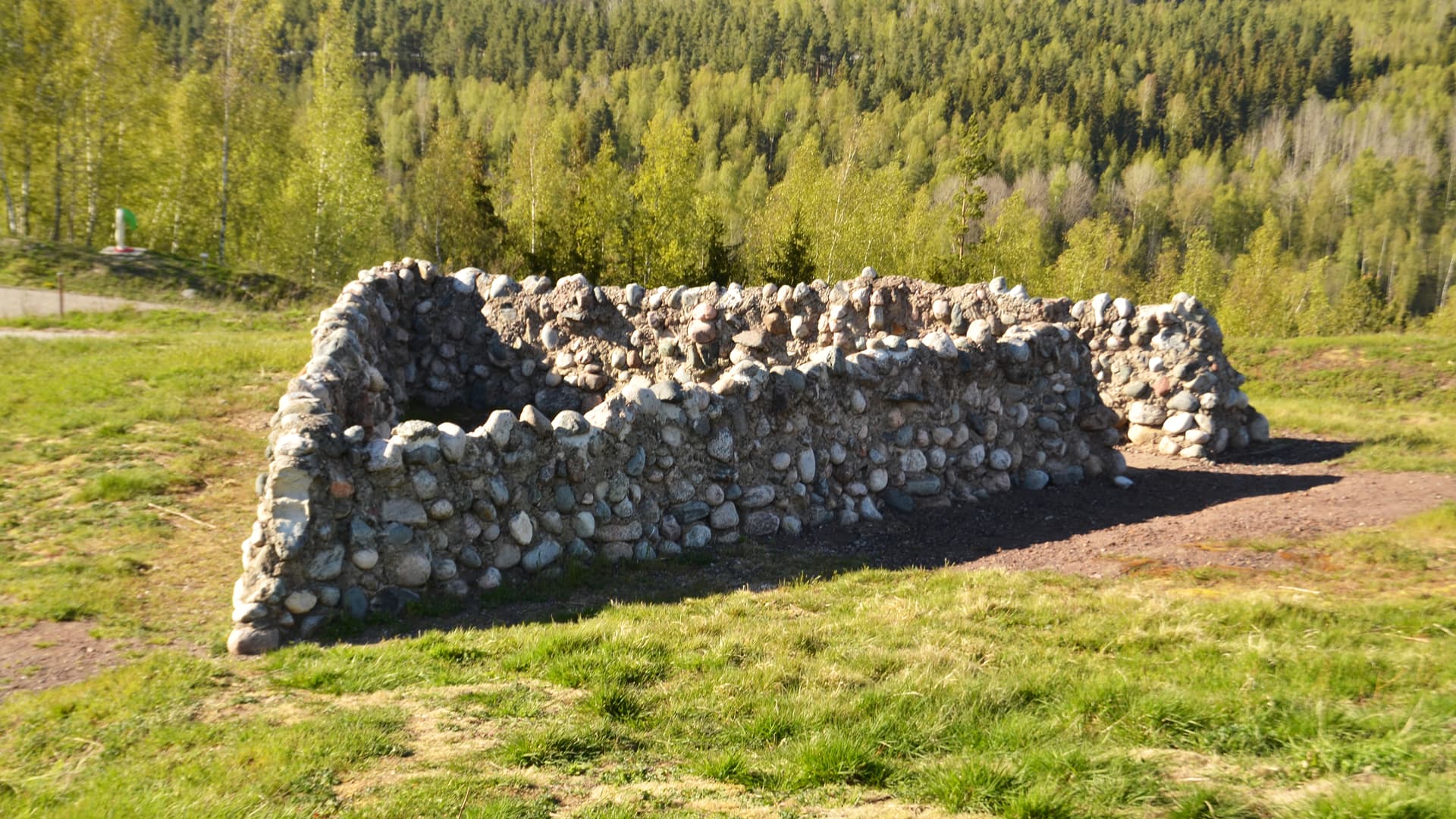3. Hesperidernas trädgård
ARTIST: Lars Vilks (2006)
TECHNIQUE: Murad natursten

The art work in front of you is a triangular, walled-in place. The title is a reference to ancient mythologies where paradise often was depicted as a garden. In ancient Greek mythology the half-god Hercules was given an order by King Eurystenes to perform twelve great deeds. One of the tasks was to fetch apples from the garden of the Hesperidia. They were said to give eternal life to anyone who ate them. Hercules succeeded in his task and returned to the king with the apples. In spite of being tempted the king gave up eternal youth and returned the apples to the Garden of the Hesperidia, the only place where the apples of eternal youth could be kept.
But the art work is more than these mythological starting points. Here on top of the mount the work is also an image of the perseverance of life, man´s stubbornness and strong belief. Despite many attempts it is not possible to make an apple tree grow in the Garden of the Hesperidia at Art at the Top. Still, life clings to the most extreme of environments. It develops, adjusts and finds new ways of surviving. Paradise can be found in the most unexpected places, even where nothing ought to be able to grow.
Many apple trees were cut down when the quarries were opened in the area. Perhaps they were the inhabitants´ personal paradise, for children as well as adults. In particular the trees were and assurance of fruits and wholesomeness as the dark and winds of winter descended upon the plains of Närke.
The artist who created The Garden of the Hesperidia is Lars Vilks, born in 1946 in Helsingborg. He is not only an artist but also an art critic, professor of art history, author and debater. He is best known for his art work entitled Nimis at Kullaberg in Scania. Nimis is a work of wooden constructions, remains of driftwood, deals and branches. Vilks is a self-taught artist, but is also academically trained as an art theoretician. In that role he has for example been professor of the theory of art at the Royal College of Fine Arts in Stockholm and at the Academy of Art in Bergen. He has also taught at the Academy of Art in Oslo.
From the beginning Vilks was a painter. A bit later he started to work with conceptual art projects. The most important part of Vilks´ artistic career was begun in 1980. He then began working with sculpture and started work on Nimis. At this time postmodernism entered the stage of Swedish art. Vilks was a part of this movement of conceptually aimed artists who repudiated the aesthetics of modernism.
Vilks also devotes himself to criticizing his own artistic activities as if they were done by someone else. His different works of art, Vilks himself and what he does, all medial attention and measures taken by public authorities all go hand in hand with the spirit of postmodernism, which Vilks initiated into his artistry. Lars Vilks is represented at the Museum of Modern Art in Stockholm.
During the years Vilks has been exposed to threats as a result of a much criticized work entitled The Muhammad Drawings. This art work done as a series depicts the face of
Muhammad on a dog placed in a roundabout. The threes original drawings from 2007 were done in a scrawled style with a felt-tip pen. They were done for an exhibition called The Dog in Art at Tällerud, but his contribution was stopped. After some criticism Vilks produced a new series of detailed drawings in pencil on the theme Muhammad as a roundabout dog. Due to this Vilks has been subjected to arson, attempted murder and bombings.
Sidinformation
- Senast uppdaterad:
- 20 september 2023
- Sidan publicerad av:
- Piia Edh
